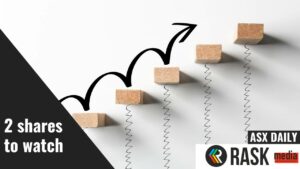BetaShares Australia 200 ETF (ASX: A200) might be one of the best ways to invest into ASX shares.
Why exchange-traded funds (ETFs) are a great way to invest
If you don’t know what an ETF is then it could be a smart idea to look at Rask’s free beginner ETF investor course.
An ETF basically lets you invest in a whole bunch of different businesses with a single investment. I think it’s very good if you want to get good diversification, but you don’t want to buy 50, or 100 or 1,000 businesses yourself.
What’s so good about the A200 ETF?
If you’re looking to invest in ASX 200 blue chip shares then BetaShares Australia 200 ETF may be the most effective way to do it. It gives solid diversification to 200 businesses.
A lot of the biggest holdings are the names that you probably already know of, including these with a weighting above 2.5%: Commonwealth Bank of Australia (ASX: CBA), BHP Group Ltd (ASX: BHP), CSL Limited (ASX: CSL), Westpac Banking Corp (ASX: WBC), National Australia Bank Ltd (ASX: NAB), Australia and New Zealand Banking Group Ltd (ASX: ANZ), Wesfarmers Ltd (ASX: WES), Macquarie Group Ltd (ASX: MQG) and Woolworths Group Ltd (ASX: WOW).
However, as you’d expect with an Australia-focused fund, around of the portfolio is invested in just two sectors – financials and materials. That’s not as good diversification as I’d like for what’s meant to be a good idea for diversification.
The best reason to like the A200 ETF, compared to say Vanguard Australian Shares Index ETF (ASX: VAS), is the lowest annual management fee. It’s just 0.07% per year. That’s really low and means that investors get to keep almost all of the returns generated.
How good have the returns been?
Not very high. Many of the large ASX blue chips in the BetaShares Australia 200 ETF haven’t done much over the last decade in terms of capital growth.
Since inception in May 2018, the A200 ETF has delivered an average total return per annum of around 8%. That’s not much considering the income/dividends make up a sizeable portion of that amount. Over the last five years, the ASX 200 has delivered an average return per annum of 10.3%.
It’s a decent way to invest in ASX shares, but I think there can be better ways.
For example, the listed investment company (LIC) WAM Leaders Ltd (ASX: WLE) portfolio has delivered an average gross return per annum of 14% since inception in May 2016 (that’s before fees and expenses), compared to the S&P/ASX 200 Accumulation Index of 9.1% per annum.
ASX blue chips are pretty mature businesses. It could be better to go for ASX growth shares with more growth potential that follow the Rask investment philosophy.




